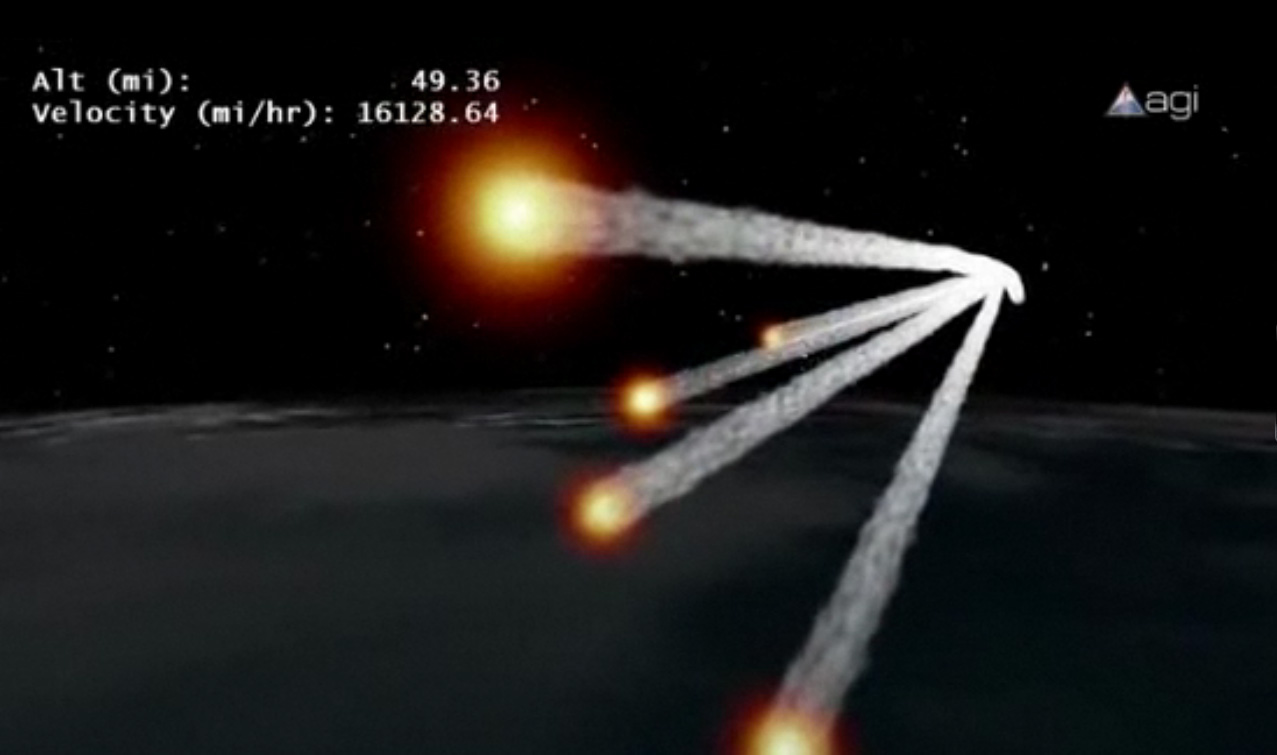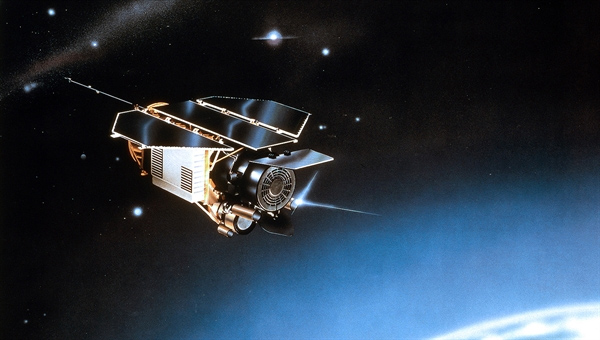FAA to Pilots: Watch Out for Falling German Satellite Debris

A huge defunct German satellite is expected to plunge to Earth this weekend and the Federal Aviation Administration wants pilots to be on the lookout for any space debris from the falling spacecraft.
In a special alert, FAA officials warned pilots to keep watch for any signs of Germany's Roentgen Satellite (ROSAT), a 21-year-old X-ray space observatory slated to fall from orbit between Saturday afternoon and early Sunday (Oct. 22, and 23).
"Aircraft are advised that a potential hazard may occur due to re-entry of the satellite ROSAT into the Earth's atmosphere," the FAA alert warns.
The nearly 2.7-ton ROSAT satellite is predicted to re-enter Earth's atmosphere sometime between 2 p.m. EDT (1800 GMT) today and 8 a.m. EDT (1200 GMT) on Sunday, according to officials with the German Aerospace Center, which managed the spacecraft's mission. Because ROSAT's orbit can take it over much of the Earth's surface, the exact time and location of its final death dive cannot yet be predicted, they added. [Photos of the falling ROSAT satellite]
About 30 huge pieces of ROSAT are expected to survive the fiery re-entry of Earth's atmosphere and could fall over a 50-mile (80-kilometer) track somewhere on Earth. That debris could impact the surface at about 280 mph (450 kph).
There is about a 1-in-2,000 chance that ROSAT debris could pose an injury risk to someone on Earth, German space officials have said. But the actual personal risk to a single person is extremely low, since ROSAT has a high chance of re-entering over the ocean.
"In the interest of flight safety, it is critical that all pilots/flight crew members report any observed falling space debris to the appropriate [air traffic control] facility and include position, altitude, time and direction of debris observed."
Get the Space.com Newsletter
Breaking space news, the latest updates on rocket launches, skywatching events and more!

FAA officials said that they are working with NASA and the U.S. Department of Defense to make sure that all aircraft in United States airspace receive the latest re-entry information for ROSAT.
NASA and the Defense Department's U.S. Space Surveillance Network regularly track more than 20,000 pieces of space junk in orbit to make sure they don't pose a threat to other spacecraft.
ROSAT launched into space in 1990 and spent nine years mapping the universe in the X-ray range of the light spectrum before suffering a major malfunction. German space officials shut the satellite down in 1999.
Since then, the spacecraft's orbit has decayed to the point that it can no longer stay in orbit. Once ROSAT re-enters Earth's atmosphere, it is expected to break apart, with larger pieces — such as its primary optics mirror and other systems — surviving the fall.
The ROSAT spacecraft is the second satellite to plunge to Earth in two months. On Sept. 24, NASA's school bus-size Upper Atmosphere Research Satellite (UARS) re-entered over the Pacific Ocean.
Like ROSAT, the 6 1/2-ton UARS spacecraft was a dead satellite that could no longer maintain its orbit. NASA launched the UARS satellite in 1991 and shut it down in 2005 after it was replaced by newer Earth-observing satellites.
Editor's note: If you snap a photo or observe the re-entry of the ROSAT satellite and want to share it with SPACE.com for a story or gallery, contact managing editor Tariq Malik at: tmalik@space.com.
You can follow SPACE.com Managing Editor Tariq Malik on Twitter @tariqjmalik. Follow SPACE.com for the latest in space science and exploration news on Twitter @Spacedotcom and on Facebook.
Join our Space Forums to keep talking space on the latest missions, night sky and more! And if you have a news tip, correction or comment, let us know at: community@space.com.

Tariq is the Editor-in-Chief of Space.com and joined the team in 2001, first as an intern and staff writer, and later as an editor. He covers human spaceflight, exploration and space science, as well as skywatching and entertainment. He became Space.com's Managing Editor in 2009 and Editor-in-Chief in 2019. Before joining Space.com, Tariq was a staff reporter for The Los Angeles Times covering education and city beats in La Habra, Fullerton and Huntington Beach. In October 2022, Tariq received the Harry Kolcum Award for excellence in space reporting from the National Space Club Florida Committee. He is also an Eagle Scout (yes, he has the Space Exploration merit badge) and went to Space Camp four times as a kid and a fifth time as an adult. He has journalism degrees from the University of Southern California and New York University. You can find Tariq at Space.com and as the co-host to the This Week In Space podcast with space historian Rod Pyle on the TWiT network. To see his latest project, you can follow Tariq on Twitter @tariqjmalik.









